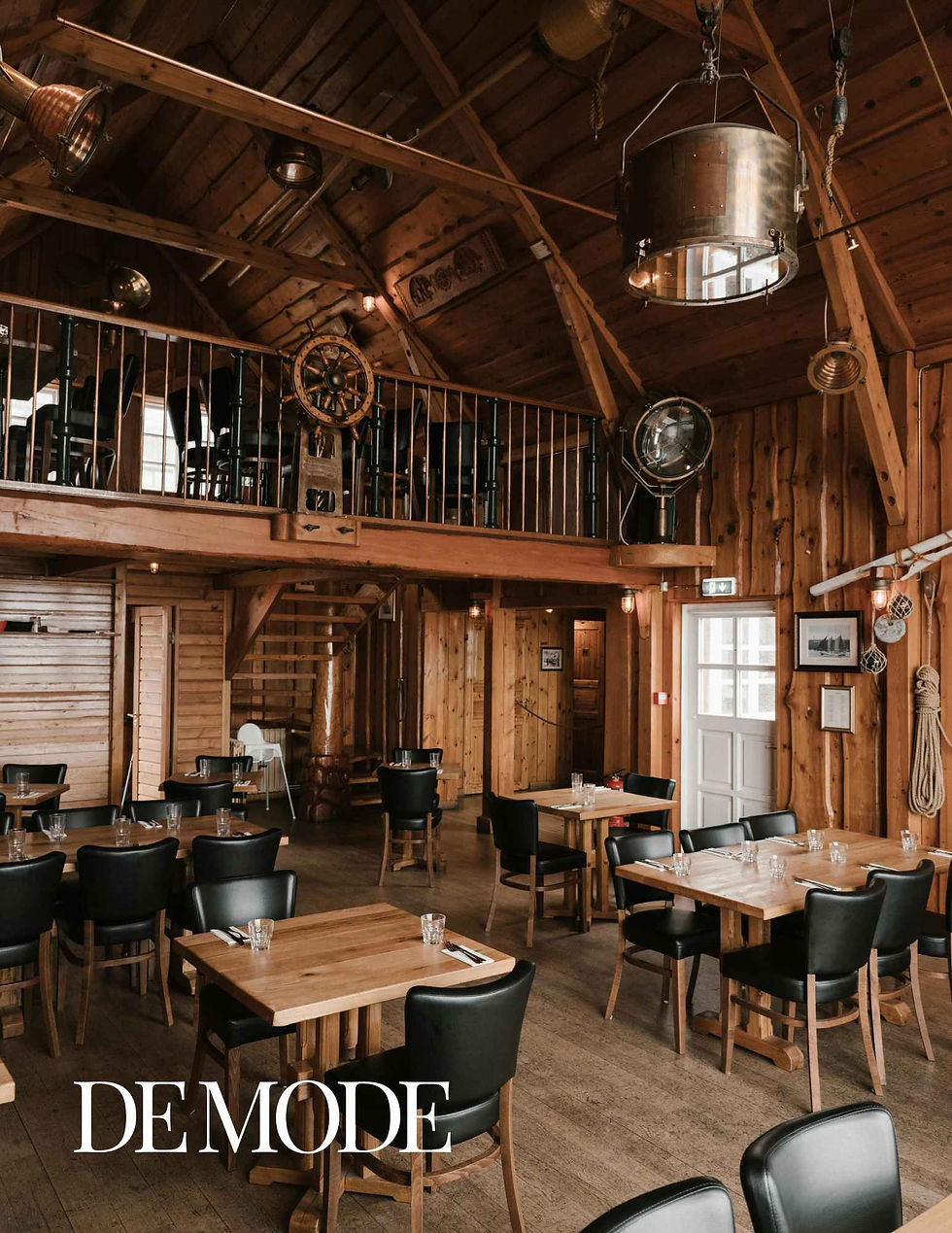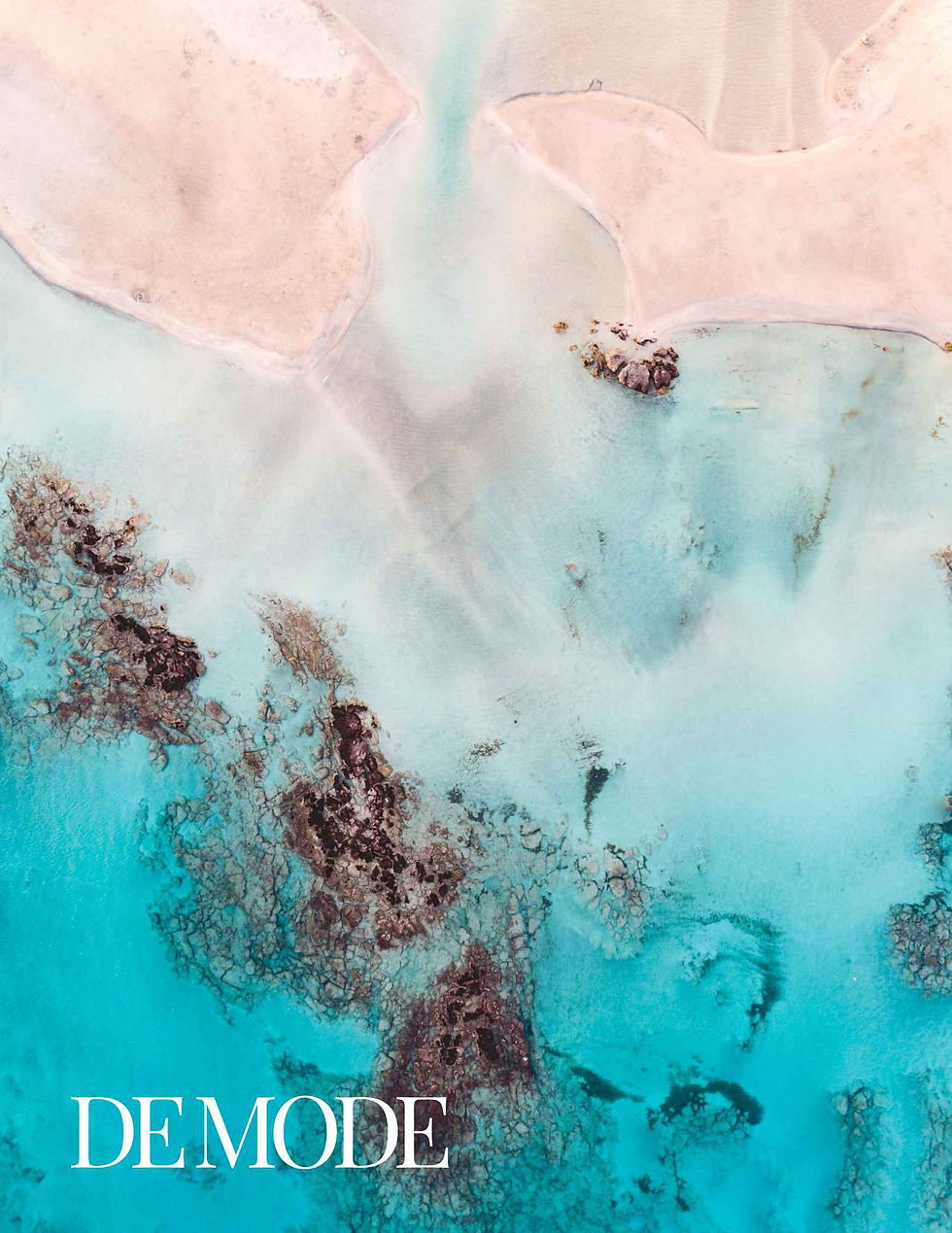"THE ROLE OF TEXTURE IN PHOTOGRAPHY - HOW TO USE TEXTURE TO CREATE COMPELLING IMAGES": DE MODE GLOBAL
- DE MODE

- Feb 20, 2024
- 4 min read
ORIGINALLY PUBLISHED IN DE MODE | PHOTOGRAPHY
Article Published on: 20TH FEB 2024 | www.demodemagazine.com
In the realm of photography, texture serves as a powerful visual element that can evoke emotions, add depth, and engage the viewer's senses. From the rough, weathered surface of aged wood to the soft, velvety petals of a flower, texture invites us to explore the tactile sensations of the world around us, transforming two-dimensional images into multisensory experiences. In this exploration, we delve into the multifaceted role of texture in photography and uncover how photographers can harness its potential to create compelling and evocative images.

Texture, in its essence, refers to the surface quality of an object or scene—the interplay of light and shadow, the roughness or smoothness of a material, the intricate patterns and details that define its physicality. In photography, texture can be found everywhere, from natural landscapes to urban environments, from everyday objects to human skin. By capturing the nuances of texture through the lens, photographers have the opportunity to imbue their images with a sense of tangibility and presence, inviting viewers to immerse themselves in the rich tapestry of visual sensations.
One of the most fundamental ways texture enhances photography is by adding depth and dimension to an image. By highlighting the contrasting textures within a scene—such as the rugged contours of a mountain range against the soft, wispy clouds above—photographers can create dynamic compositions that draw the viewer's eye into the frame. Texture becomes a means of sculpting space, shaping the visual hierarchy, and guiding the viewer's gaze through the photograph, from the foreground to the background and beyond.
Furthermore, texture serves as a conduit for conveying mood, atmosphere, and emotion within a photograph. Consider, for example, the weathered facade of an old building, its crumbling bricks and peeling paint imbued with a sense of history and nostalgia. Through texture, photographers can evoke a myriad of feelings—from nostalgia and melancholy to awe and wonder—transporting viewers to distant places and bygone eras. Texture becomes a language of its own, speaking to the viewer's subconscious and eliciting a visceral response that transcends words.
In addition to its emotive qualities, texture plays a crucial role in storytelling within photography. Each texture tells a story—a narrative of growth and decay, of resilience and vulnerability, of the passage of time etched into the fabric of the world. By focusing on the intricate details and patterns of texture, photographers can capture moments of quiet introspection and contemplation, inviting viewers to reflect on the transient nature of existence and the beauty found in imperfection.

Moreover, texture serves as a means of enhancing the realism and authenticity of a photograph. In portraiture, for example, the subtle texture of skin—the lines and creases, the pores and imperfections—adds a sense of intimacy and immediacy to the image, allowing viewers to connect with the subject on a deeper, more human level. Similarly, in still life photography, the tactile qualities of objects—the roughness of a wooden table, the smoothness of a ceramic vase—invite viewers to imagine reaching out and touching the scene, blurring the boundaries between reality and illusion.
Technically, photographers can employ various techniques to accentuate texture and create visually compelling images. Experimenting with lighting, for instance, can dramatically alter the perception of texture within a scene. Side lighting, with its pronounced shadows and highlights, can enhance the three-dimensional quality of texture, revealing subtle details and nuances that might otherwise go unnoticed. Similarly, backlighting can create a halo effect around textured surfaces, accentuating their contours and silhouettes against the background.
Furthermore, photographers can manipulate depth of field to selectively focus on specific textures within a scene, creating a sense of depth and dimensionality. By using a shallow depth of field, for example, photographers can isolate a single element—such as a flower petal or a leaf—while allowing the surrounding textures to blur into a soft, dreamy backdrop. Conversely, using a deep depth of field can bring the entire scene into sharp focus, allowing viewers to explore the intricate textures of every object within the frame.
In post-processing, photographers can enhance texture through careful editing techniques, such as sharpening and clarity adjustments. By selectively increasing the sharpness and definition of textured areas, photographers can bring out the fine details and intricacies that might have been lost in the original capture. Similarly, tonal adjustments—such as increasing contrast or adjusting the exposure—can accentuate the interplay of light and shadow, further enhancing the texture and depth of the image.

In conclusion, texture plays a multifaceted role in photography, serving as a conduit for emotion, storytelling, and sensory experience. From the rugged landscapes of nature to the intricate details of everyday objects, texture invites us to explore the world with our senses—to touch, to feel, to immerse ourselves in the rich tapestry of visual sensations. By harnessing the power of texture, photographers can create images that resonate with depth, meaning, and authenticity, inviting viewers to embark on a journey of discovery and wonder.



Comments